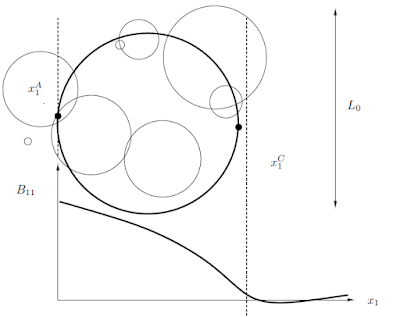IS EVERYTHING GETTING WORSE? AN APPROACH BY THERMODYNAMICS
Picture 1 Starry Nights, Van Gogh, 1889 [1].
The question during these crazy times is certainly about life. We try to understand whether the life is degenerating or evolving. Or rolling forward, as in Van Gogh's "Starry Nights"? How do the decay, the growth, and the recurrence coexist? Does history 'repeat'?These questions are strictly connected to ‘entropy’. The meaning of ‘entropy (τροπή) is 'transformation / change'. It is a term of the 19th century which is the century of change and transformation. Human being saw the possibility of influencing on the change by own self in the 19th century. Also, the rate of change had increased for the same reason but the main question about the change appeared in the successive century. 20th century was the age when the concept of ‘time’ has been placed in Physics (Einstein), Psychiatry (Freud), and Literature (Proust). However, the core of the time is in thermodynamics.
Classical thermodynamics owes much more the steam pump than the technology owes to classical thermodynamics. This is not the case for the non-equilibrium thermodynamics, on the other hand.
In equilibrium thermodynamics, the beginning and the end of the state changes are considered. Changes of the state is compared to an 'extremum' change called 'reversible'. Classical thermodynamics is based on these 'extremum' changes and situations. The extremum state that a thermodynamically isolated system will reach, is the equilibrium state and the entropy is at its highest value at this state. Clausius said in 1865 that the entropy of the universe 'runs' towards the highest value while the energy of the universe remains constant [2]. The universe is a thermodynamically isolated system, and the extreme case where its entropy will peak is inevitable.
The equilibrium state is the "extremum" also for a non-isolated system. For example, a system and its surrounding exchange heat if they are at different temperature values. Heat transfer stops when the temperature values are equal. The 'extreme' exchange occurs when the change of state for the system is internally reversible. The increasing / decreasing entropy of the system depends on the amount of heat exchange and the temperature of the boundary separating the system from the surrounding. In the extreme case; the increasing / decreasing entropy of the system equals to the decreasing / increasing entropy of the surrounding and the total entropy remains unchanged (or the entropy generation equals to zero).
So how does the system behave in non-extreme state changes and situations? Classical thermodynamics does not answer this question. Answering this question also explains why entropy increases. We need modern thermodynamics to analyze the "far from equilibrium" situations, beyond the "non-equilibrium" situations. Modern thermodynamics is not limited with the analysis and design of heat engines generating work, or refrigeration machines that extract heat from the low temperature system to the high temperature one. Modern thermodynamics is applicable to nature and allows us to reevaluate the stereotypes, such as going worse.
From Boltzmann to Einstein
In the equilibrium state, when an instant fluctuation occurs it takes the state away from the equilibrium. Then, it is seen that the equilibrium is restored in a very short time. However, if fluctuations occur at a time when the system is too far from the equilibrium, a new parameter, which is independent of the size of the system introduces and it is effective on the state. This new parameter is the ‘distance from the equilibrium’. The possibility of such a fluctuation was demonstrated by Einstein in 1910, based on the Boltzmann's relation (1872) defining possible states, in microscale [3].
Where S is the entropy, and W and k demonstrate the possible situations and the Boltzmann’s constant, respectively.
Bifurcation
Ilya Prigogine, who is a Nobel laureate, prized in 1977 for his theory of dissipative structures says that there are no extreme points such as the highest value or the lowest value when the system is far from the equilibrium. The fluctuations at far from equilibrium are not damped. Even the possibility of these fluctuations covering the whole system [4] is high. Irreversibilities are constructive, Prigogin added, that if there were no irreversibilities, there would be no life. It is interesting that Clausius had described the universe as running to the highest value of entropy, just one year ago. Being away from the equilibrium meant that new space-time structures were to be formed. “The organizations formed by the fluctuations" is due to the far from equilibrium followed by being unstable and finally reaching to the point of bifurcation. Fig. 1 illustrates the bifurcation of the solutions, for the equation







Comments
Post a Comment